My brother and I passed through Rocky Mountain National Park on our way back home to Utah. I want to share with you a few of the photographs we took and information about the park taken from the map that is given to park visitors.
Trail Ridge Road
Set in the Southern Rockies, Rocky Mountain national Park could be called “the top of the world for everybody.” Here treeline and tundra –the miniaturized alpine world — are accessible to all along the park’s Trail Ridge Road. The highest major highway in North America tops out at 12,183 feet above sea level. Here is one of the the most expansive areas of alpine terrain in the United States. Nearly one third of the park is above treeline — 11,400 feet of elevation in the park — the limit above which conditions are too harsh for trees to grow.
Rocky Mountain National Park holds 72 named peaks above 12,000 feet of elevation. Longs Peak, at 14,259 feet, is the most northernmost so-called “fourteener” — peak rising above 14,000 feet — in the Rocky Mountain chain. Great Earth forces thrust the Rockies skyward 70 million years ago, but many of the exposed granite rockies in the park are much older: 1.3 billions years or more.
Glacier
Three major glacial episodes from 738,000 to 13,750 years ago sculptured the scenery that inspired citizens to persuade Congress to make the national park in 1915, one year before Congress created the National Park Service. For over 30 years most of the park has been managed like designated wilderness — to preserve its natural conditions and wilderness character.
As the valley glacier inched along over hundreds of years, it scoured out the distinctive U-shaped valley. Like a giant slow-motion conveyor belt, the glacial ice eventually carried its rock debris down the valley. At the farthest point of the glacier’s advance it deposited a load of rock fragments, called terminal moraine. About 15,000 years ago, the glacier began to recede. As it dissipated, the glacier dropped rubble along its flanks, forming lateral moraines, and the meltwater also left behind sediments that became the meadows of Horseshoe Park.
Toll Memorial
The Tundra World Nature Trail of a half mile leads to the Toll Memorial. Mike and I took the wrong trail that ended in a dead end. We had to clamber up a steep slope to find the nature trail. Once on the trail at the end of the path we climbed up a rocky cleft. There was a memorial plaque commemorating Roger Wolcott Toll, the Rocky Mountain National Park superintendent from 192 to 1928 who helped Trail Ridge Road to become a reality.
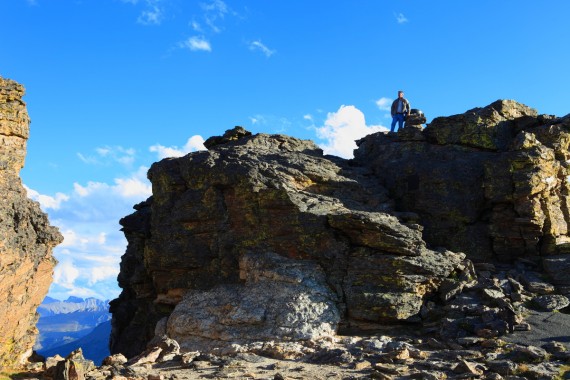
Mike took this photograph of me standing next to the Trail Ridge Mountain Index. The plaque is directly below
Climb to the top of the rock outcrop to view a grand panorama. You can use the Trail Ridge Mountain index to sight landmarks up to 60 miles away. At 12,304 feet I found the view to be magnificent.
Sunset
We hung around in the park until sunset. Just as the sun was going down we stumbled across a herd of elk. They were so close it was hard not to get a good photograph.
We continue our sightseeing in More Rocky Mountain National Park

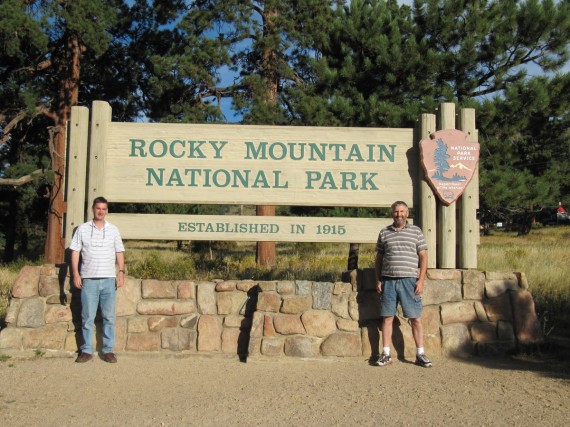

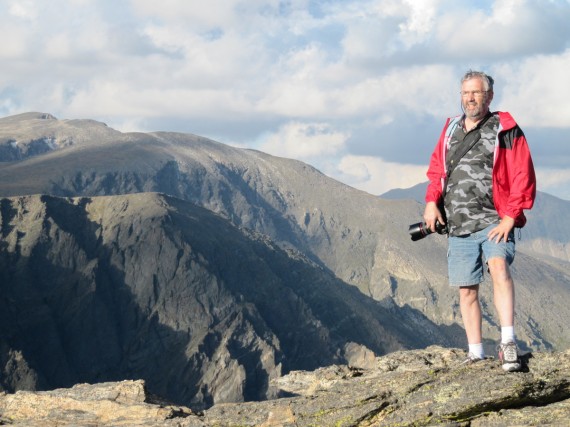
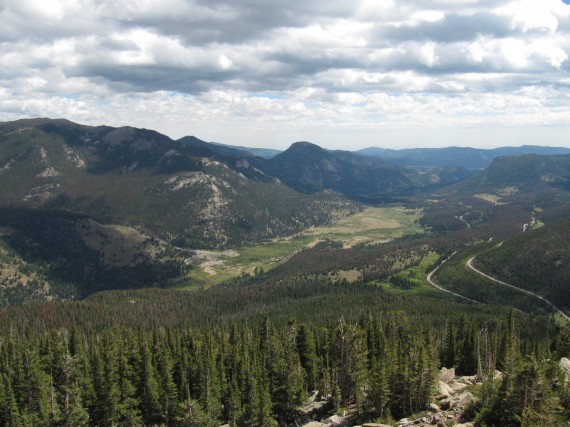
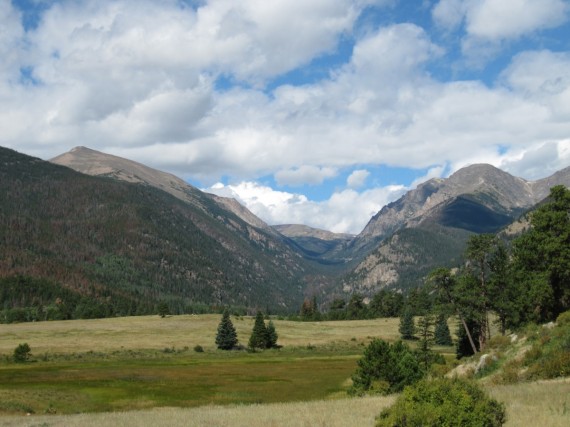
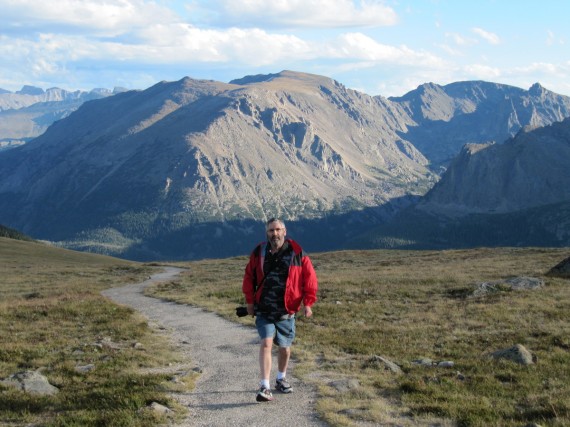

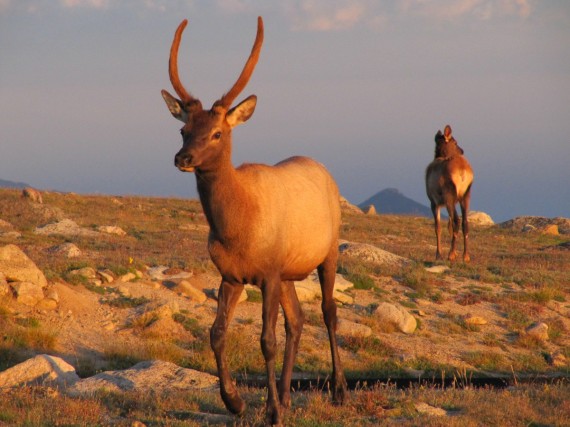
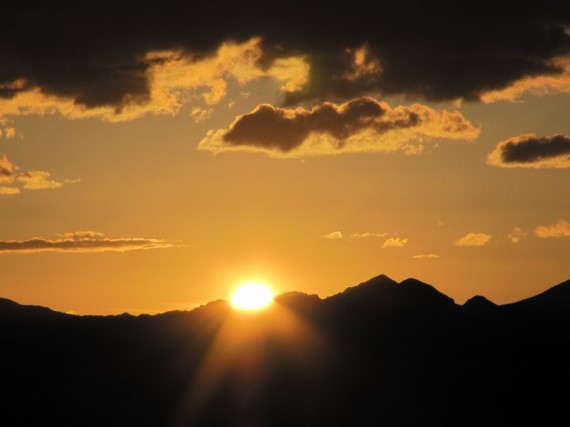
Looks like a great national park, I like the pictures you have takem
Great Pictures.